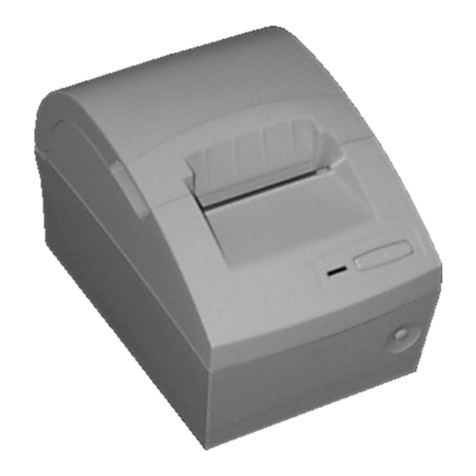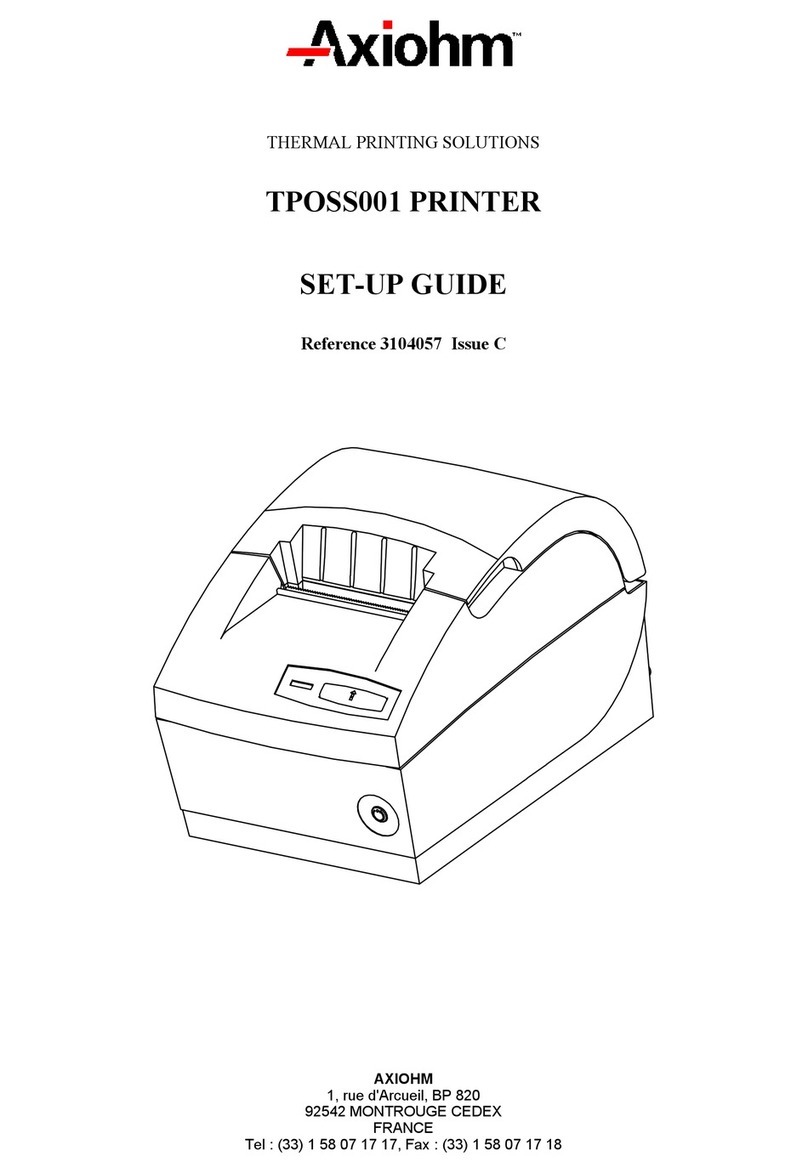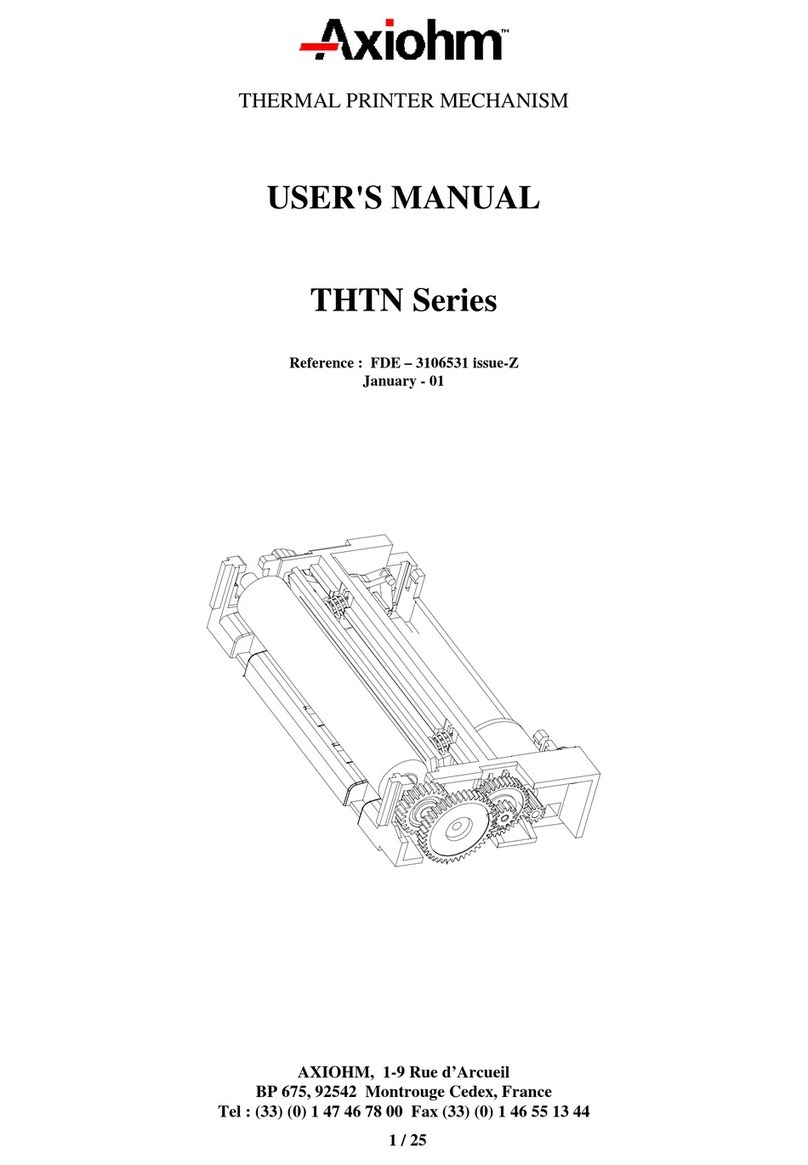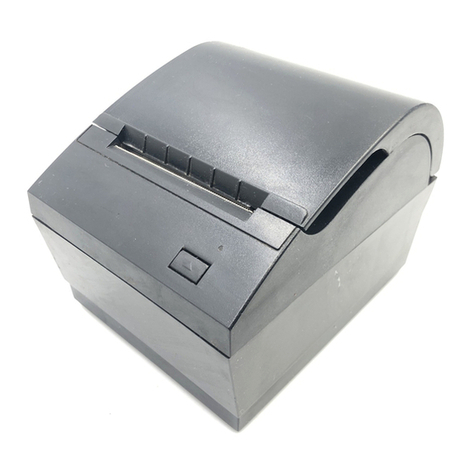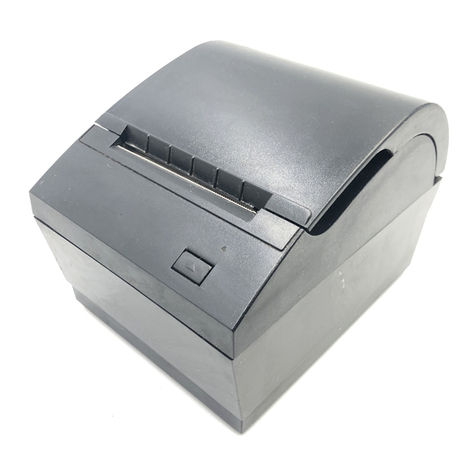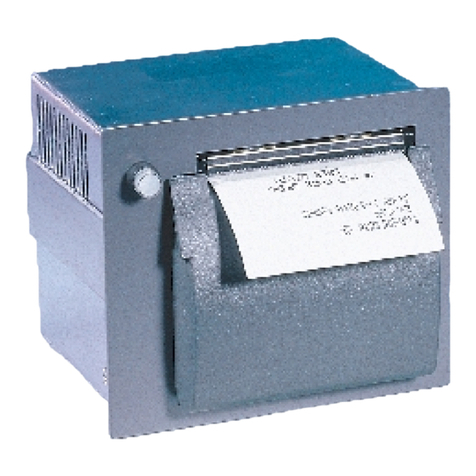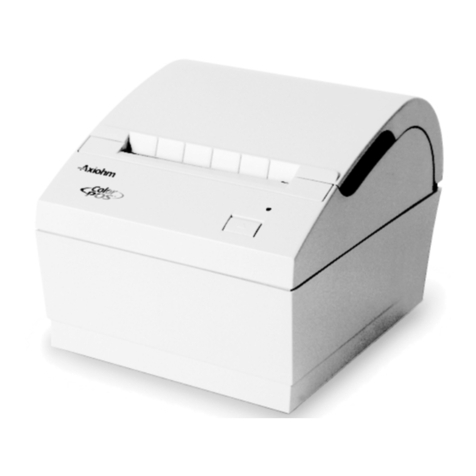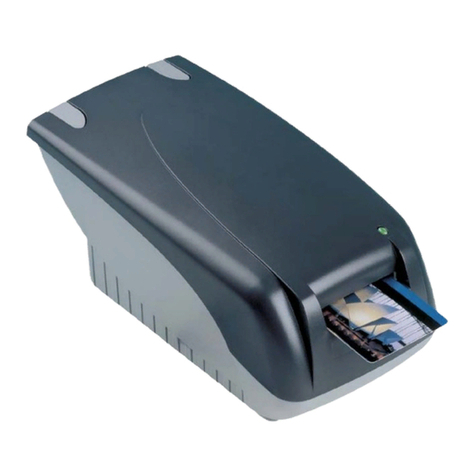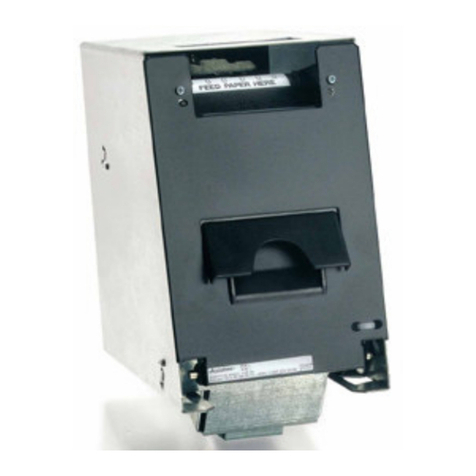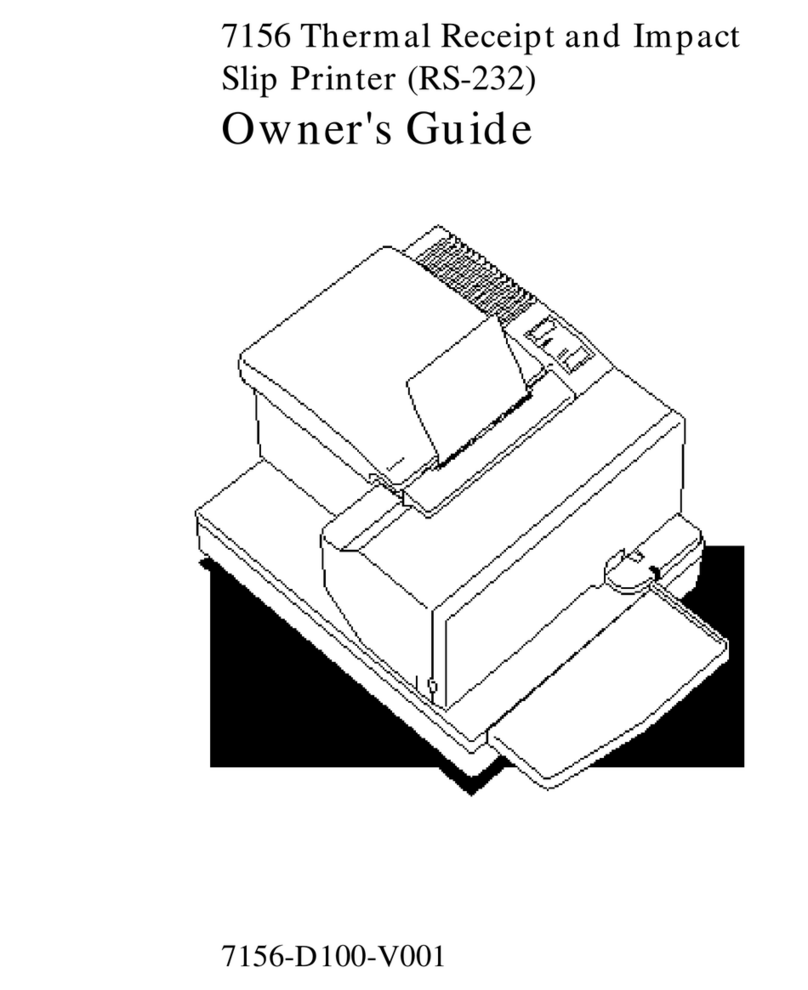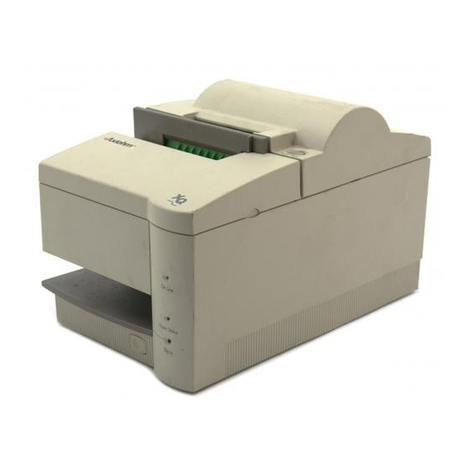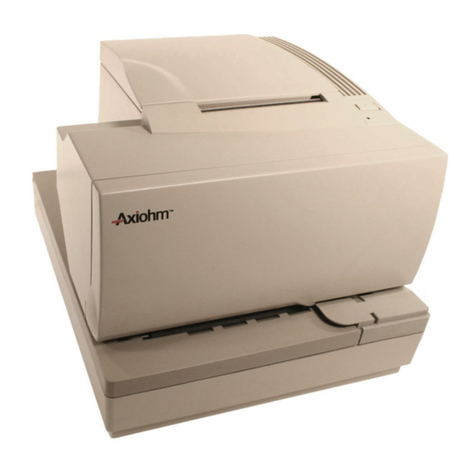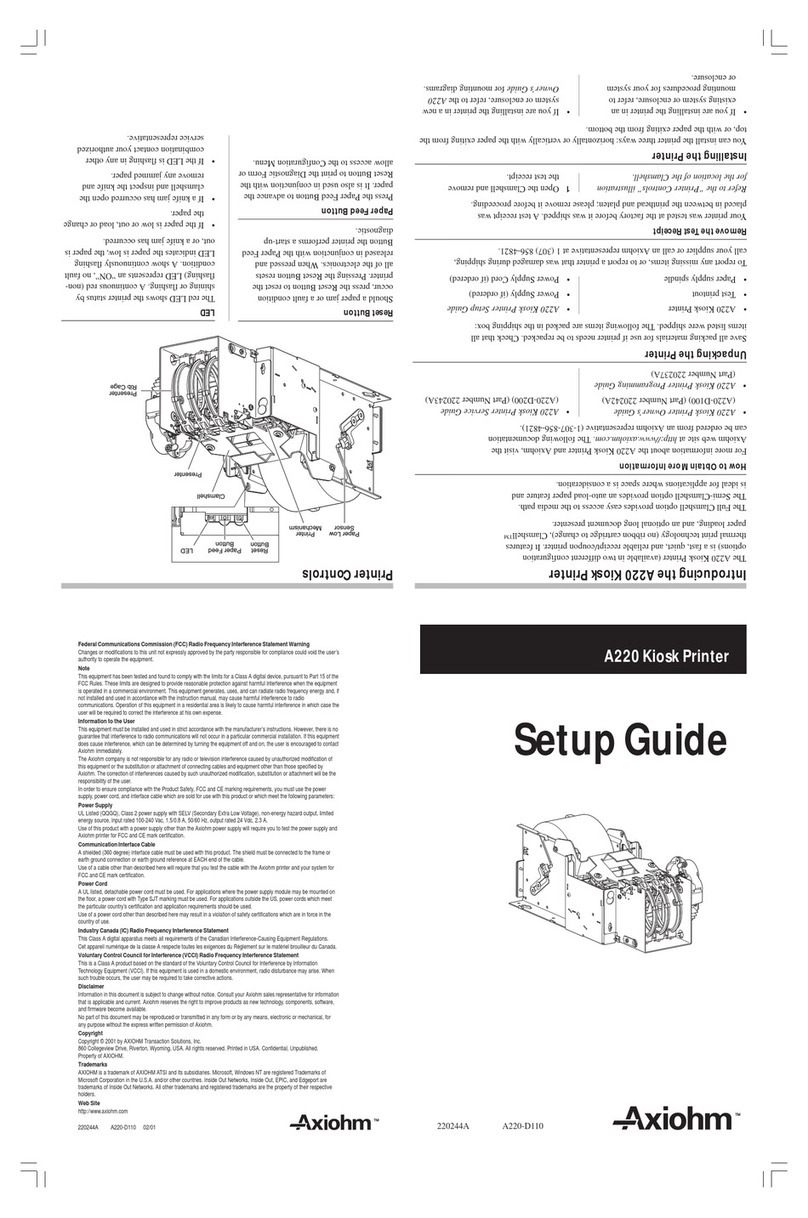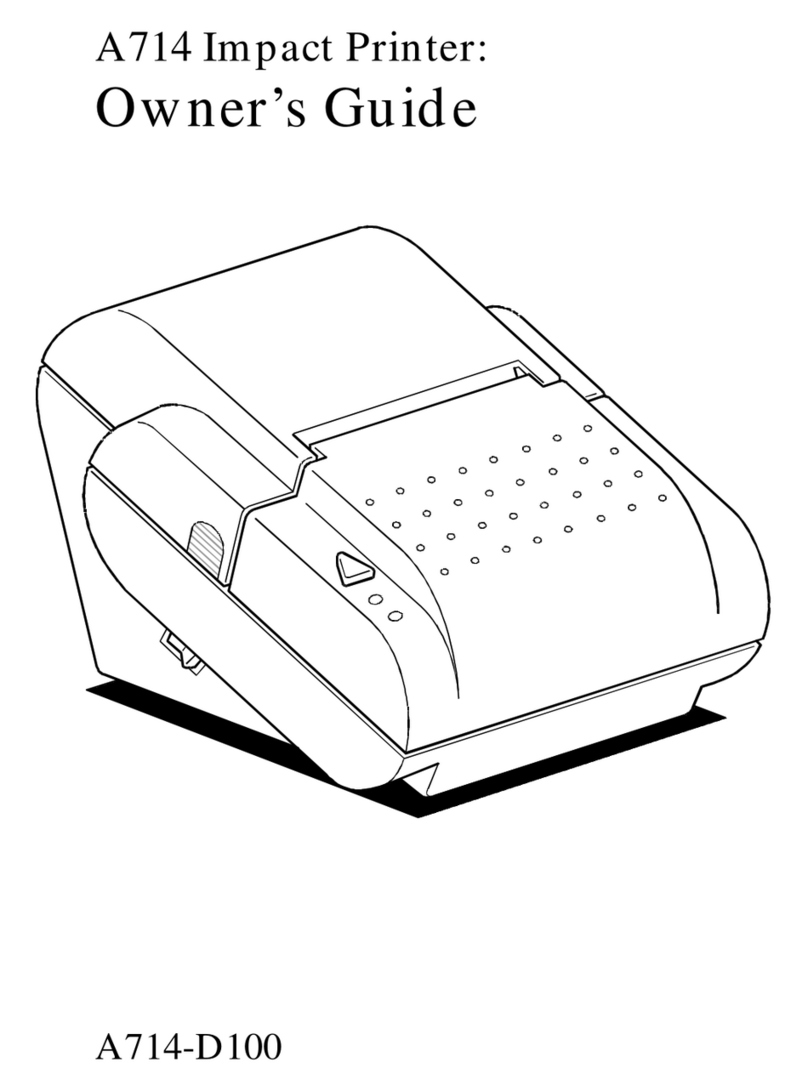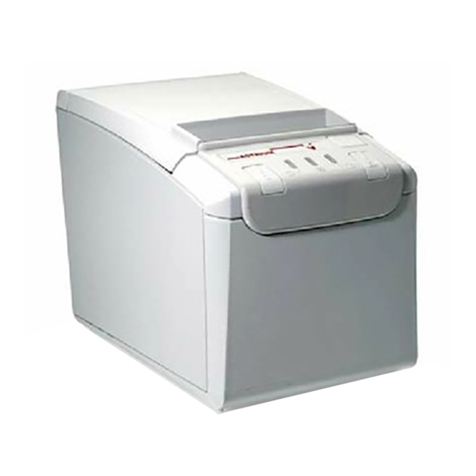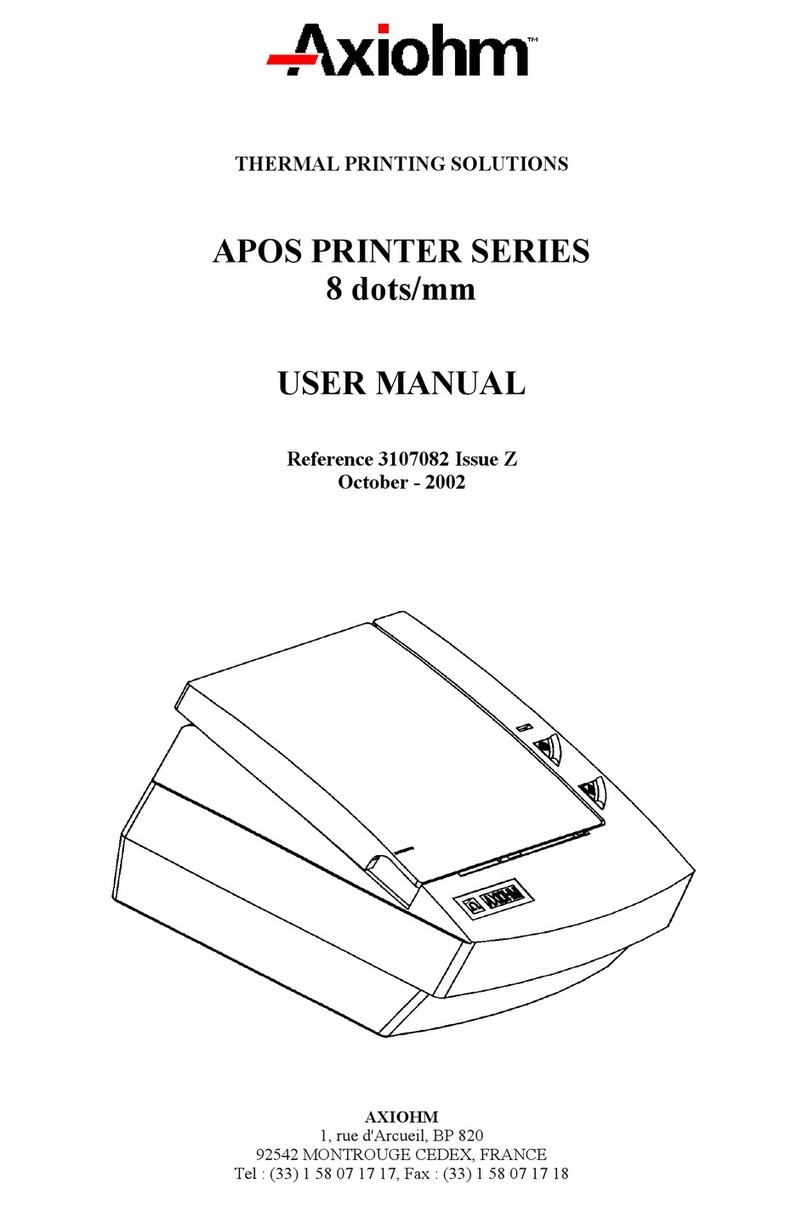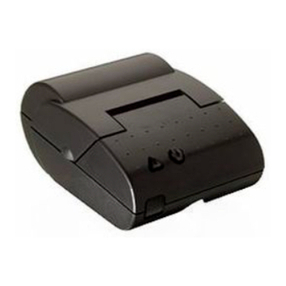
CM/XM Series User Manual Page 5/42 Ref: FDE - 3102473 / A
1. UNPACKING
Each printer mechanism is packaged in an antistatic bag. Observe precautions for handling in
electrostatic protected areas.
2. OVERVIEW
Based on static thermal printing technology, the CM/XM series is a family of user-friendly, highly
reliable devices which have been specially designed to fit in the minimum space.
CMxx : Printer only or printer with optional tear bar cover
XMxx : Printer with cutter
Very small size printer and cutter
Silent mechanism
Option of 4 dots/mm or 8 dots/mm print-heads
Optional cover with tear bar
Optional cover with Guillotine cutter (XMxx)
Easy to connect (only one connector for motor, printhead, opto-sensor and cutter)
Front and bottom paper introduction possible
Optional drive for paper rewinder
SUMMARY OF PRINTER SPECIFICATIONS
ITEM VALUE UNITS
xMBC xMDG -
Printing method Static thermal dot line printing -
Number of resistor dots 192 384 -
Resolution 4 8 Dots/mm
Printing width 48 mm
Paper width 60 mm
Head temperature detection By Thermistor -
Number of steps / dot line 2 1 -
Paper feed / dot line 0.250 0.125 mm
Paper empty detection Opto-sensor -
Operating voltage range Vcc (logic) 4.75-5.25 V DC
Operating voltage range Vch (dot) 20 - 28 20 - 26.4 V DC
Peak printhead current
(all dots ”on ” at nominal value ) 8.25 8.8 A
Current consumption:
V ch (at nominal value) 43 23 mA per resistor dot ”on ”
Current consumption:
V cc (at nominal value) 160 100 µA

